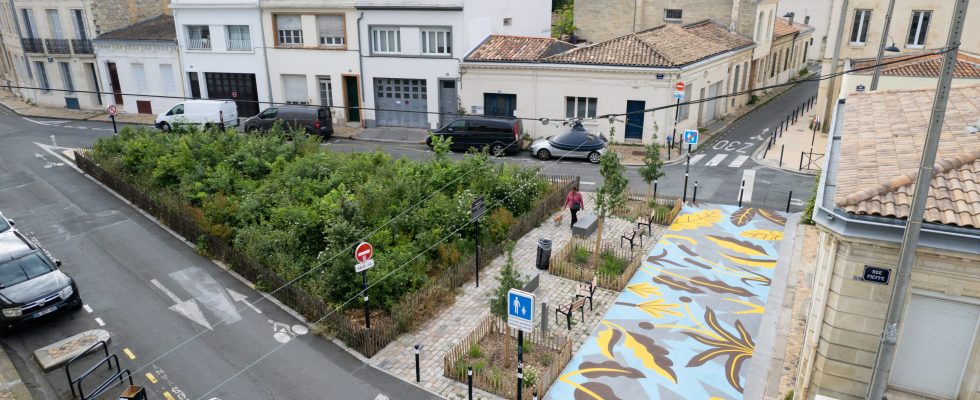It was a fir tree that made the new mayor of Bordeaux, Pierre Hurmic, known in 2020. Three years later, the controversy surrounding the Christmas totem no longer hides the forest planted by ecologists in response to “the climate emergency ” decreed the day after their election. Already 13,400 trees have been planted, and as many are scheduled for 2023, against “600 plantations per year previously”, underlines the first magistrate. And to point to the bad example of the renovation of the Place de Tourny: a perfect circle of 18th century facades, of course, but “not a tree” in this mineral desert.
“Drought, heat waves, floods: Bordeaux appears in red on the government’s risk map”, warns the city councilor. The city, renowned for its oceanic mildness, experienced unprecedented rises in mercury last summer, up to 41 degrees. So Pierre Hurmic multiplies the plantations, “the best natural air conditioner” against urban heat islands, according to him. In summer, the people of Bordeaux shave the walls of Place Pey-Berland, in front of the town hall, to escape the furnace. Its main occupant is pleased to have negotiated with the architect of the buildings of France (ABF) the installation of 18 tall trees. And too bad if their branches conceal superb buildings, so far piously highlighted by the heritage policy.
So much for parking too. On the site of a 12-space car park at the intersection of Billaudel, Fieffé and Francin streets today stands a dense grove, a local version of the Miyawaki micro-forest. “We were inspired by it for water management, without watering, and for rapid growth in order to trap CO2”, affirms Didier Jeanjean, the assistant in charge of nature in the city. Under the evacuated cobblestones, the poor backfill of sand and gravel, characteristic of Bordeaux soil, was mixed with wood chips, with no added soil. Natural selection does its work in the 25 species of trees and shrubs, above a vegetal jumble of 65 varieties of herbaceous plants, attacked by foraging insects. An ecosystem where the decomposition of dead leaves and rootlets replenishes fertile organic matter.
The “renaturation” of the boulevards
Other micro-forests or sometimes more classic orchards, to satisfy the essential ABF, will soon grow in the crossroads, on “the asphalt triangles which often have the sole function of offering a few parking spaces”, points out Didier Jeanjean. The streets that encircle the squares, “useless for traffic, except for parking”, will disappear. As many hectometres of tar to blow up in order to de-impermeabilize the soil and restore the humidity in the air.
The Bordeaux “green network”, both a source of freshness and a carbon sink, advances in concentric circles around the schools. The city has voted to revegetate 115 playgrounds over ten years and 80 “children’s streets” in front of these establishments. A dozen major axes will also be made one-way to widen the cycle path, separate the bus lane and, again and again, multiply the plantations.
“It would be too easy to act only in parks and gardens. We must also treat the streets. We act to the detriment of the car, but we assume our choice”, claims Pierre Hurmic. “Ideally, we would like to remove one in four parking lots to put a tree there, but that will be for the next term,” says Didier Jeanjean. On this horizon too is announced the “renaturation” of the boulevards, consisting in surrounding the city with a large green and protective belt. On condition, however, of being re-elected…
